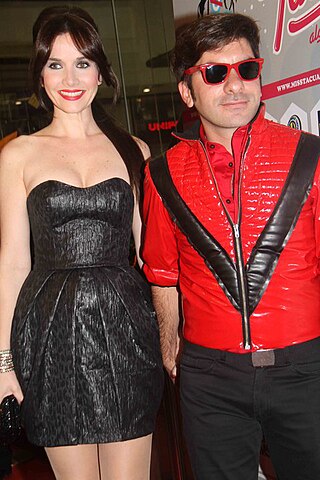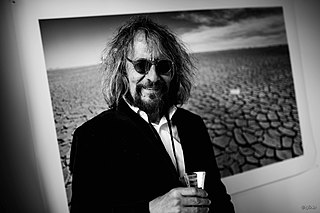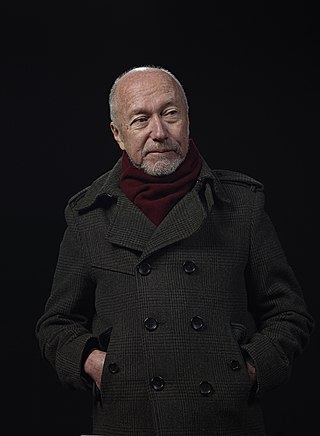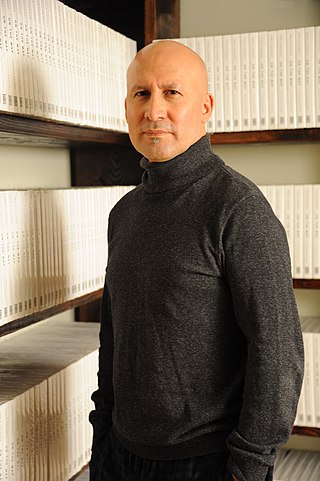
The São Paulo Art Biennial was founded in 1951 and has been held every two years since. It is the second oldest art biennial in the world after the Venice Biennale, which serves as its role model.

Alfons Hug is a curator, critic and exhibition organizer.

Martín Sastre is a Uruguayan film director and contemporary media artist working with film, video, sculpture, photography and drawing.

Darío Escobar is a Guatemalan artist.
Jorge Glusberg was an Argentine author, publisher, curator, professor, and conceptual artist.
Humberto Castro is an important Cuban painter.
Ramón Antonio Carulla is a Cuban artist.
Cundo Bermúdez, born Secundino (Cundo) Bermúdez y Delgado, was a Cuban painter. Born in Havana, Cuba, he died of a heart attack in his Westchester home on October 30, 2008.
Ricardo Viera was a Cuban artist specializing in painting, drawing, and engraving.

Gastón Ugalde is considered the father of contemporary bolivian art and was the recipient of the prestigious Konex Award in 2002 along with Oscar Niemeyer. Ugalde was named "the most important living Bolivian artist" by the Konex Foundation in Argentina and was also referred to as the "Andean Warhol" by art critics. Ugalde was also known as "the enfant terrible" of the Bolivian Art Scene.

Gerardo Mosquera is a freelance curator, critic, art historian, and writer based in Havana, Cuba. He was one of the organizers of the first Havana Biennial in 1984 and remained central to the curatorial team until he resigned in 1989. Since then, his activity turned to be mainly international: he has been traveling, lecturing and curating exhibitions in more than 80 countries. Mosquera was adjunct curator at the New Museum of Contemporary Art, New York, from 1995 to 2009. Since 1995 he is advisor in the Rijksakademie van Beeldende Kusten in [Amsterdam]. His publications include several books on art and art theory, and more than 600 articles, reviews and essays have appeared in numerous magazines, including: Art Nexus, Cahiers, Lápiz, Neue Bildende Kunst, Oxford Art Journal, Poliester, Third Text. Among other volumes, Mosquera has edited Beyond the Fantastic: Contemporary Art Criticism from Latin America and co-edited Over Here: International Perspectives on Art and Culture. His theoretical essays – which have been influential in discussing art’s cultural dynamics in an internationalized world, and contemporary Latin American art – are dispersed in English, but have been collected in books in Caracas and Madrid in Spanish, and in Chinese in Beijing. Mosquera was the Artistic Director of PHotoEspaña, Madrid (2011–2013), the Chief Curator of the 4th Poly/Graphic San Juan Triennial (2015-2016), co-curator of the 3rd Documents, Beijing (2016) and co-curator of the Guangzhou Image Triennial (2021).

Víctor Vázquez is a photographer and a contemporary conceptual artist born in San Juan, Puerto Rico. Víctor Vázquez has been working as an artist for more than 20 years, creating photographs, three-dimensional objects, videos and installation works in which the human body figures both conceptually and formally. Vázquez offers a series of semiotic constructs that navigate identity, ritual, politics and anthropological inquiry. Themes include the duality of language and meaning and the relationships between nature and culture. He was an artist in resident at Cuerpos Pintados, Fundacion America in Santiago, Chile, in the year of 2002 and at Proyecto ´ace Art Center in Buenos Aires in the year 2006.
Luis Pérez-Oramas is a Venezuelan/American poet, art historian and curator. He is the author of eleven poetry books, seven recollections of essays, and numerous art exhibition catalogs. He has contributed as Op-Ed author to national newspapers in Venezuela as well as to various literary and art magazines in Latin America and Europe.

Willys de Castro was a Brazilian visual artist, poet, graphic designer, industrial designer, stage designer and magazine editor. De Castro is best known for his "Active object" series and is considered to be a pioneer and founding contributor of the Neo-Concrete Movement.

Juan Nicolás Melé was an Argentine sculptor, painter, and art critic. Melé was a member of the Asociación Arte Concreto-Invención as well as co-founder of the Grupo Arte Nuevo.
Elba Damast was a Venezuelan artist.

Alexis Mendoza is a Cuban artist, writer and independent curator, based in New York City. His multidisciplinary work focuses on painting, sculpture, printmaking, drawing and installation. His art explores the transitioning and overlapping of colors as a metaphor for the Afro-Cuban customs, rituals and traditions.
Osiris Delgado Mercado (1920-2017) was a Puerto Rican artist and art historian. He is primarily known for his contributions to the history of Puerto Rican art, but he also taught in the Department of Fine Arts at the University of Puerto Rico. Delgado's artworks are held at various museums across the island, such as the Museo de Arte de Ponce, the Museo de Arte de Puerto Rico, the Institute of Puerto Rican Culture, and the University of Puerto Rico Museum of History, Anthropology and Art.

Pablo Caviedes was born in 1971 in Cotacachi, Ecuador and lives and works in New York City. He is a multidisciplinary artist who works across various media such as painting, video art, drawing, etching, installation and sculpture. He is considered part of the 21st Century US-Latino transcultural art-scene. His work focuses on social issues such as immigration, displacement and identity.

Suzi Ferrer (born Susan Nudelman, also known as Sasha Ferrer, was a visual artist based in San Juan, Puerto Rico from the mid-1960s to 1975. She is known for her transgressive, irreverent, avant-garde, art brut and feminist work.












